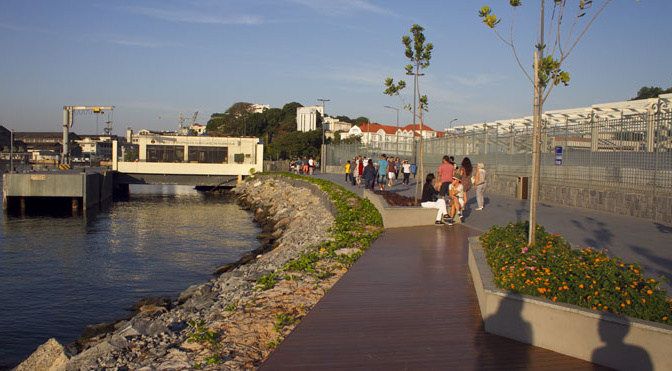Let me introduce you to the most charming sightseeing tour of the region and the most celebrated and visited by tourists and locals: the seacoast Mayor Luiz Paulo Conde, called by locals “Orla Conde”. An area of about 3 km long, full of attractions, rest areas and recreation for adults and children.
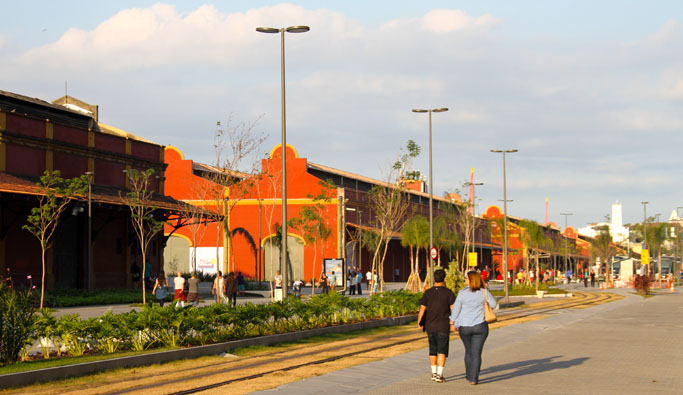
During the Olympic and Paralympic games, the place was referred to as Boulevard Olympic and over 2 million people strolled by, took photos and had lots of fun there.
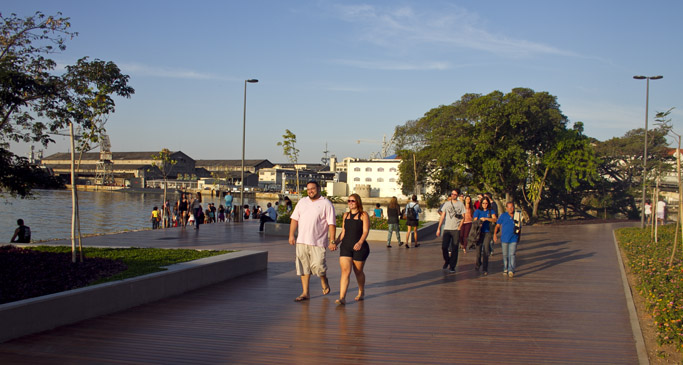
Let’s take a look at the main attractions of this region in Rio, completely revitalized and renovated which you can not keep it out of your itinerary.
How to get to Orla Conde?
The best way to get to Orla Conde is to use the Metro and VLT.
Go to a subway station and take the Metrô Line 1 train from CINELANDIA station. There, follow the signs for SAÍDA A – THEATRO MUNICIPAL (Municipal Theater). 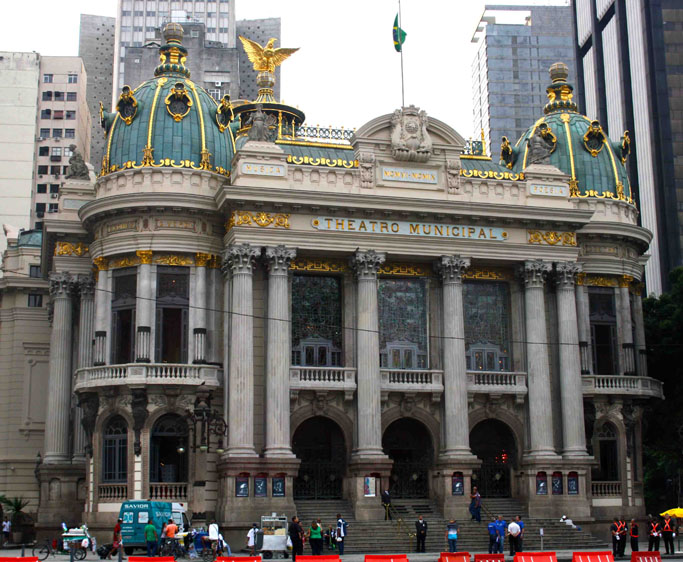 You start the tour in front of one of the most beautiful and imposing buildings in Rio. Inaugurated in 1909, it is considered the main house of spectacles in Brazil and one of the most important in South America.
You start the tour in front of one of the most beautiful and imposing buildings in Rio. Inaugurated in 1909, it is considered the main house of spectacles in Brazil and one of the most important in South America.
Standing in front of the theater you’ll see, right, the VLT train line. Walk to the station and take the VLT towards Rodoviária or Praia Formosa. Get off at the UTOPIA AQUARIO station. You’ll be at the beginning of our walking tour along the Orla Conde, or Boulevard Olímpico.
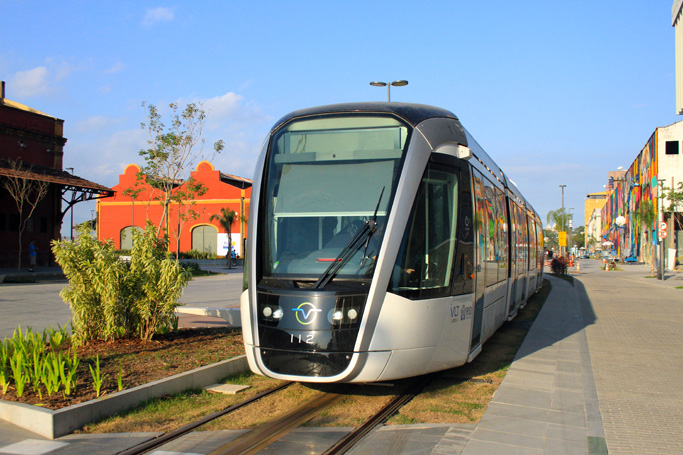
You can also go by bus but, for this, you will need the help of an mobile application. I advise you to download MOVIT to your mobile phone. MOVIT locates where you are, indicates where is the nearest bus staion, the bus line that you need to pick up and follow you during the trip, indicating, with an audible alert, the point where you need to get off.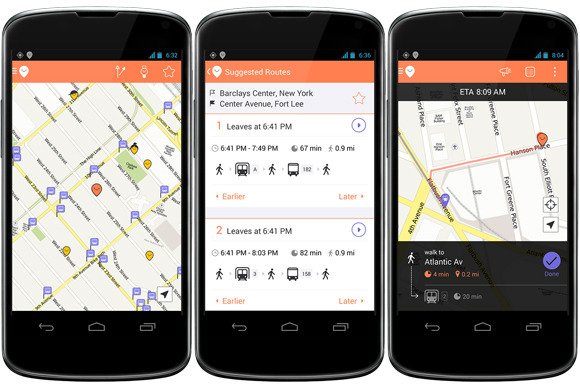
To help you find all the attractions that we’ll visit along the way,, follow the points mentioned on the map which are the numbers in brackets.
Start with a stunning voyage under the sea.
Our walk begins at the Gamboa district where the AquaRio (1), the largest marine aquarium in South America, is.
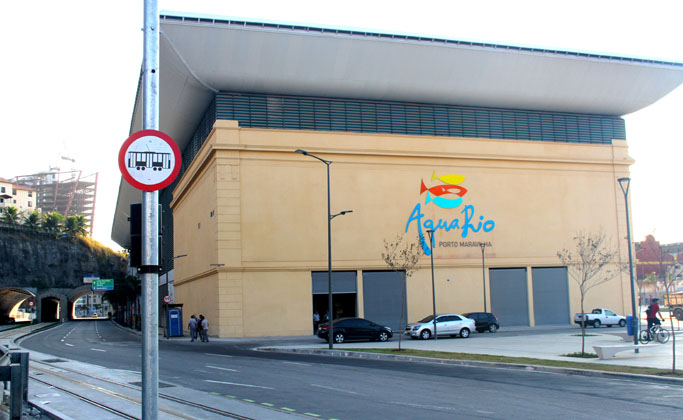
There are 26,000 m2 of built area and 4.5 million liters of water, 8,000 animals of 350 different species on display in the various precincts and grand tanks.
One of the biggest attractions is the main tank, with seven meters high and 3.5 million liters of water.
The most amazing part is to go in through a transparent tunnel with an infinity of fish around. Also, the AquaRio has: tank for diving, Science Museum, Surf Museum, touch tanks ( for children interact with some exposed animals) shop and eating area. More information on AquaRio site.
The biggest mural in the world is in “Orla Conde”.
Let’s follow the route of the VLT (Light Rail Vehicle, our Tram) by Orla Conde. A little further you will be in front of the Mural “We are all one” (2), the largest in the world, recognized by the “Guinness World Records”.
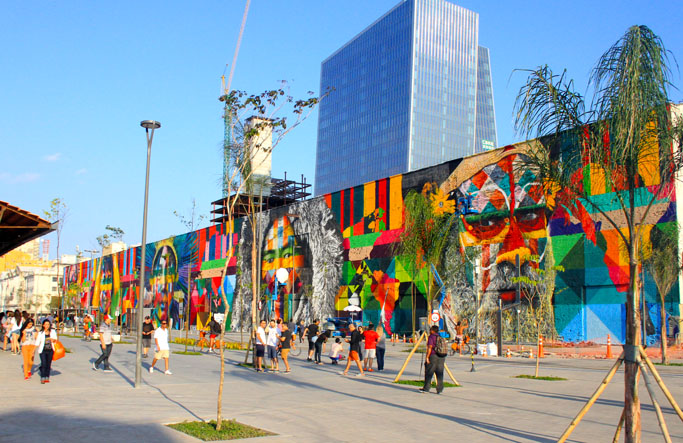
Created and painted by the artist Kobra ( Sao Paulo native), the wall is 15 meters high and 170 meters long of pure art.
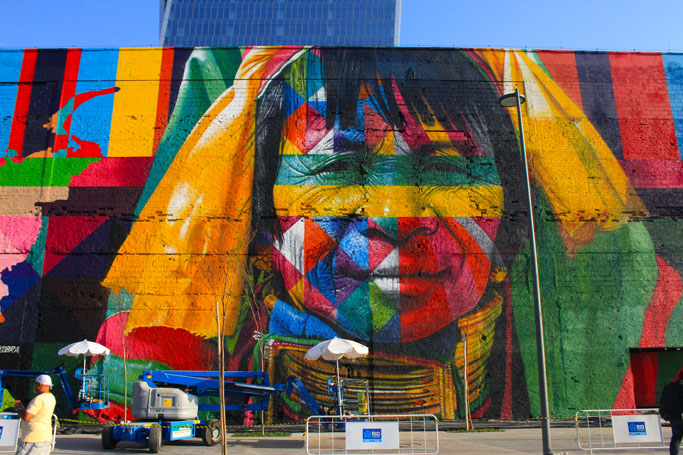
Five faces representing natives of each of the five continents: the huli, from New Guinea (Oceania), the mursi, from Ethiopia (Africa), the kayin, from Thailand (Asia), the supi, from Europe, and the Tapajos, from the Americas. The artist Eduardo Kobra is a pro in graffiti art and has murals in Japan, United States, Poland and several other countries around the world. Get your camera ready!
Click here to see a panoramic photo of the complete panel.
Arriving at Rio by ship.
Following our tour we will find, on the left, the sheds that house the arrival terminals of Rio’s Port(3).
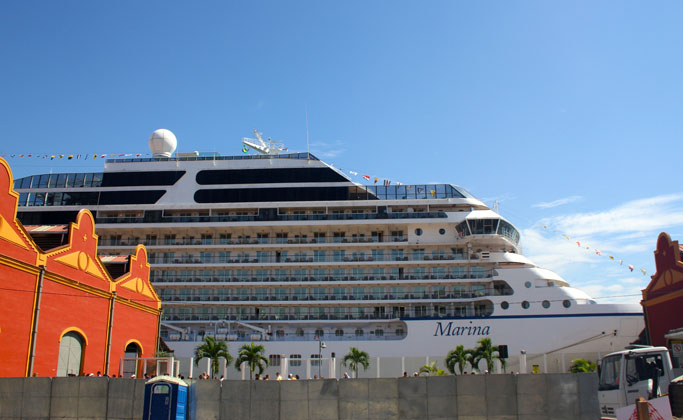
The big advantage for reaching Rio by ship is that now you disembark in the center of one of the main city tourist areas. From there, using the VLT, which has a stop in front of the disembark area and integrating metro and bus, that can take you to Sugar Loaf, Christ the Redeemer and/ or the Botanical Garden, for example.
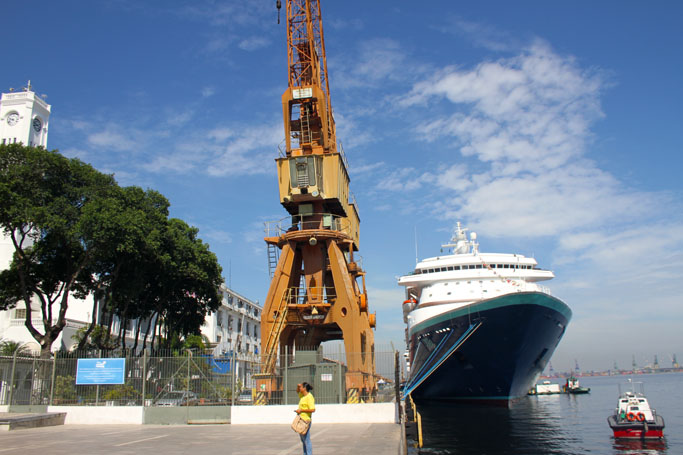
Here is a summary of how to get to these and other places, starting at the port of Rio. Print and bring it with you.
The best of Samba free.
Lets leave the “Orla Conde”. About 350 meters, you will find the Pedra do Sal (4). There, taking place every Monday and Friday, there are free concerts of the purest and traditional carioca samba.
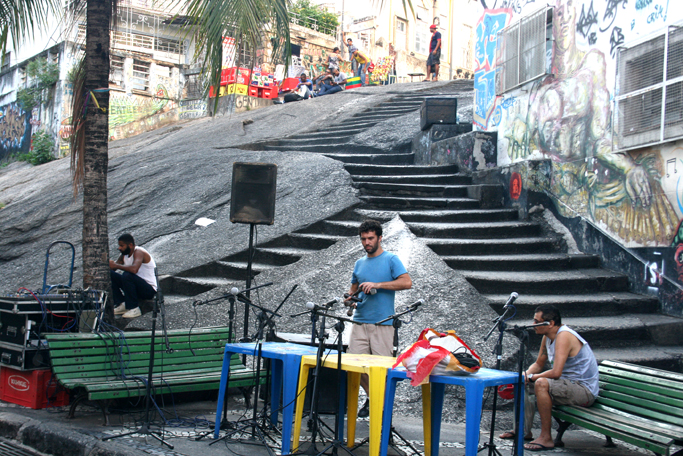
Shows start at around 8pm. Locals and tourists crowding around the big table where the artists are introduced and stalls selling beer and snacks. Unmissable program. For more information click here. Para mais informações clique aqui.
Returning to the coast, we arrive at Maua Square (5).

At one side we see the imposing Museum of Tomorrow (6)
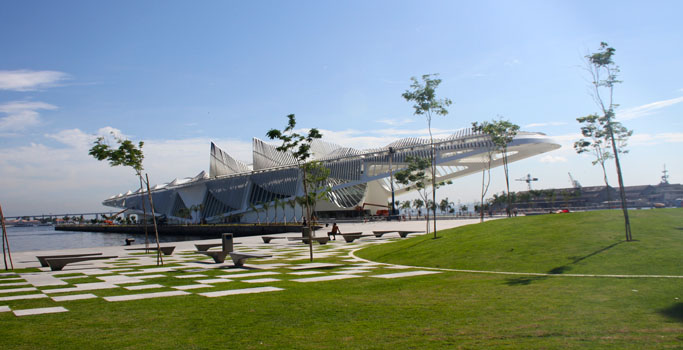
at the other, the beautiful building of the “Museu de Arte do Rio (7)(Rio Art Museum).
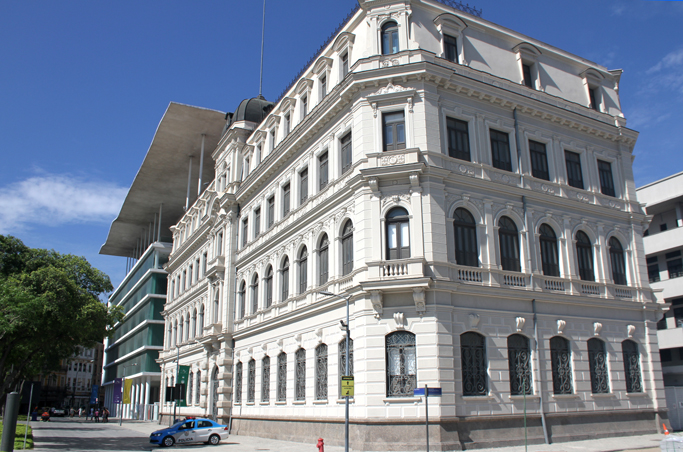
In the Museum of Tomorrow, the role of each one of us in our planet’s future.
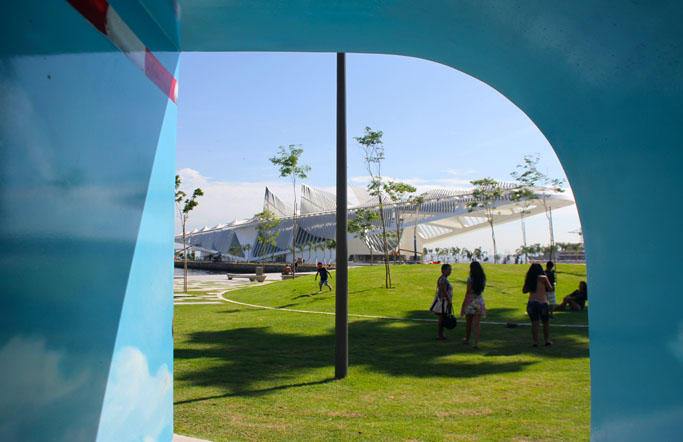
The imposing building of the Museum of Tomorrow, is now one of the Icons of the City of Rio de Janeiro. After your visit there you may change your view of your role and responsibility in the future of our planet. It is worth checking.
Click here to learn more about the Museum of Tomorrow.
Concerts, debates and exihbitions in M.A.R.
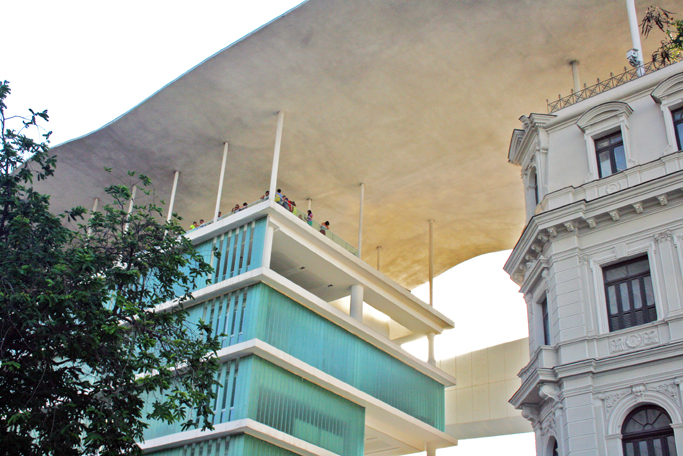
“Museu de Arte do Rio” (7), better known by its initials letters M.A.R., SEA, in english. Pay attention to the Waveform roof, that mimics the movement of the SEA and links the two buildings with completely different styles. The modernist style, at left, housed a bus station. At right, the elegant mansion Dom João VI, listed by Heritage, is home to the exhibition halls.
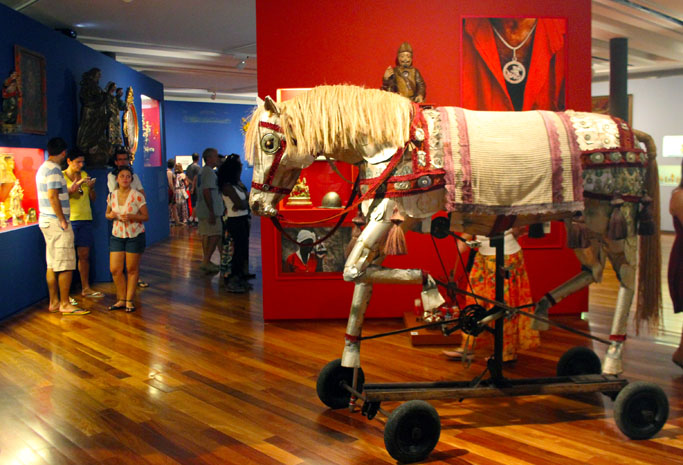
M.A.R. promotes lectures and discussions on topics of community interest as well as concerts and cultural events in addition to the national and international art exhibitions.
Click here to see the schedule.
You can schedule a visit to M.A.R. buying, at Museum of Tomorrow, a ticket for the two museums for a special and cheaper price. And you don’t need to visit both on the same day.
Click here for schedules and prices.
![]() Every Tuesday admission is free.
Every Tuesday admission is free.
At the Museum’s terrace is the Mauá restaurant, a good choice for those who want to refresh energy and enjoy exotic dishes with Brazilian ingredients. Good food with a spectacular view of the square and the Museum of Tomorrow. I truly recommend it.
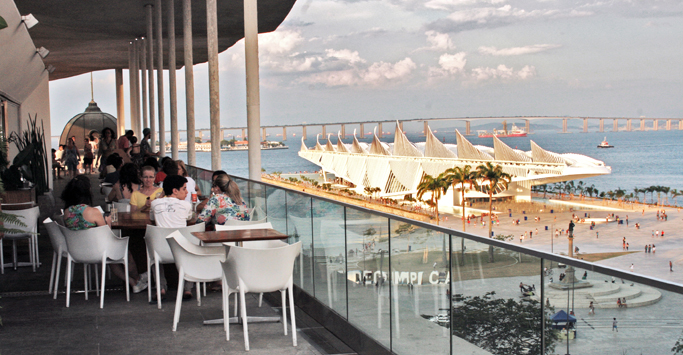
A little gem in the city center.
Let’s leave the Rim area now and visit a city relic: the Monastery of St. Benedict (8).
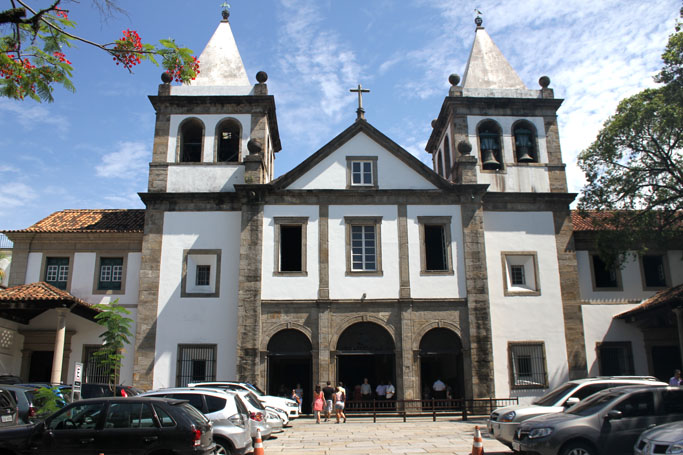
Founded by Benedictine, monks who came from Salvador in 1590, the monastery is still operating on the hill of St. Benedict.
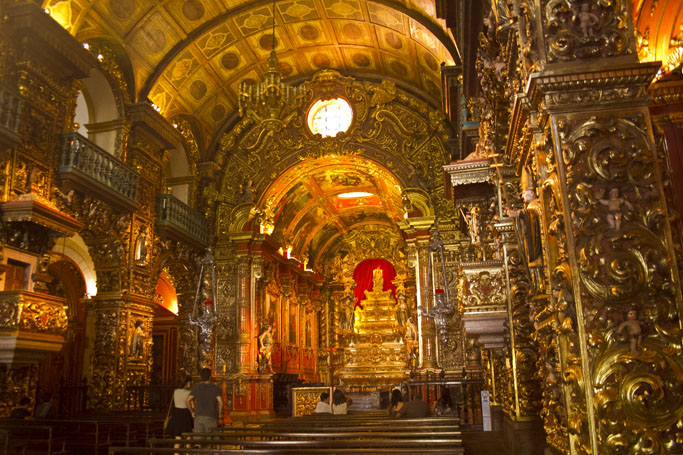
The church began construction in 1633 and was completed in 1671.
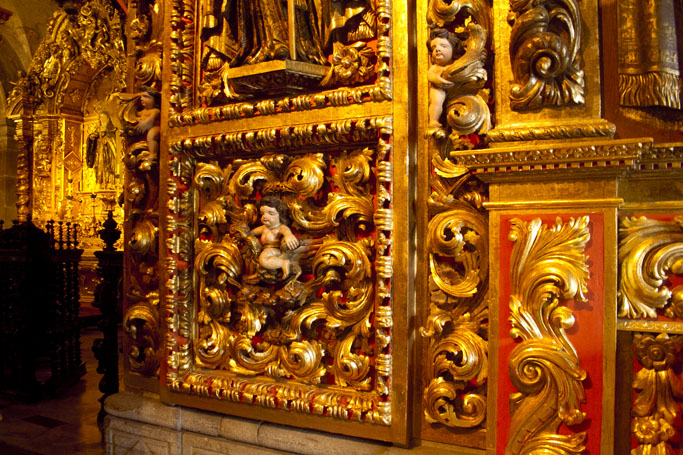 Its interior is rich, fully lined with gilded, a technique in which the wood is carved and then coated with a thin layer of gold.
Its interior is rich, fully lined with gilded, a technique in which the wood is carved and then coated with a thin layer of gold.
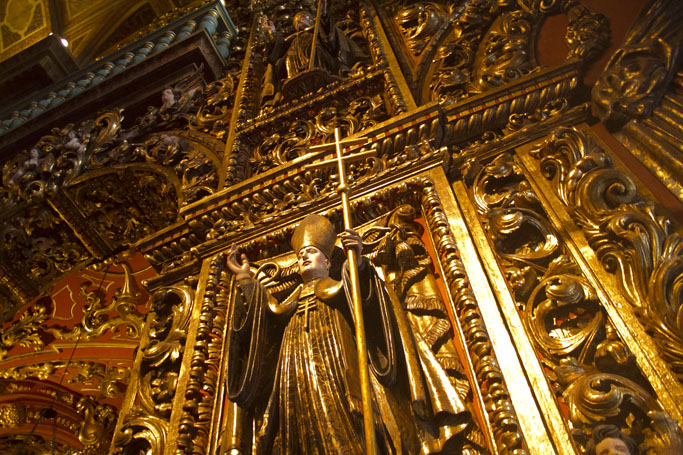 Several carvers masters were responsible for sculpting the statues and carvings that cover the structure of the church. So the mixture of styles that ranges from Baroque to the late 1700’s to the Rococó style from the second half of the eighteenth century.
Several carvers masters were responsible for sculpting the statues and carvings that cover the structure of the church. So the mixture of styles that ranges from Baroque to the late 1700’s to the Rococó style from the second half of the eighteenth century.
![]() Every Sunday at 10am they hold a Solemn Conventual Mass celebrated with organ and Gregorian chant sung by the Benedictine monks residing in the monastery. You should arrive half an hour early because it is well attended.
Every Sunday at 10am they hold a Solemn Conventual Mass celebrated with organ and Gregorian chant sung by the Benedictine monks residing in the monastery. You should arrive half an hour early because it is well attended.
The cloister of the Convent is not open to visitors, except on the days of Corpus Christi day. This date is celebrated annually 60 days after Easter, always on Thursday.
The monastery is open every day from 06am to 06pm.
We will continue our tour in the second part of this post.

